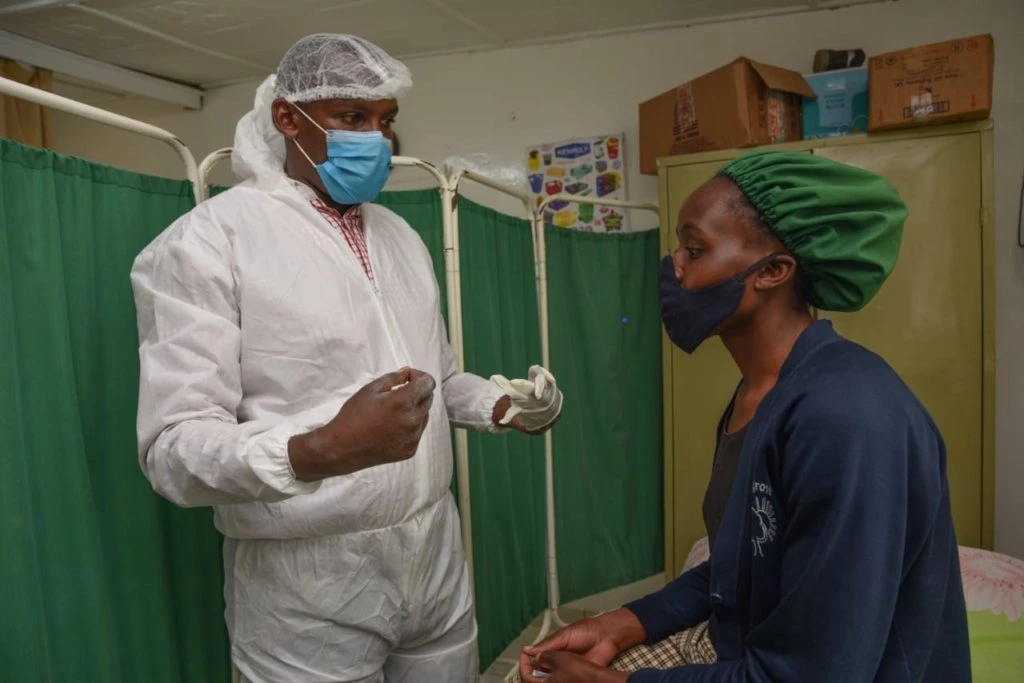Author's details
- Hakim Abubakre
- BA (Hons) International Business Management. Msc. Digital Marketing
Reviewer's details
- Dr. Benedetto Oluwaseun Osunwusi
- MBBS, MWACS, FMCOG Consultant Obstetrician & Gynaecologist
- The Premier Specialists' Medical Centre Victoria Island, Lagos, Nigeria.

- Date Published: 2025-03-12
- Date Updated: 2025-03-12
Cervical Cancer in Sub-Saharan Africa
What is Cervical Cancer?
Cervical cancer is a type of cancer that affects the cervix, the lower part of the womb (uterus) that connects to the vagina. It mostly affects women between the ages of 30 and 35, but it can happen at any age. Anyone with a cervix can develop cervical cancer. It is the second cause of cancer and death in women in sub-Saharan Africa.
The main cause of cervical cancer is an infection by a virus called human papillomavirus (HPV). This virus is spread through sexual contact. Regular cervical screening (also called a “pap smear”) helps detect early changes in the cells of the cervix, which can be treated before they turn into cancer. Cervical cancer often develops slowly over time. It typically takes 15- 20 years from the level of the viral infection to the stage of cancer. It has now become the only cancer whose cause is known and is completely preventable because of the screening.
In the early stages, cervical cancer may not cause any symptoms, which is why regular screening is important. However, if symptoms do appear, they may include:
- Bleeding from the vagina after sex, between periods, or after menopause.
- Periods that are heavier or last longer than normal.
- Unusual vaginal discharge that is watery, bloody, or smells bad.
- Pain in the lower belly (pelvis) or during sex.
- Leg pain or swelling that doesn’t go away.
If cervical cancer has spread to the lungs, additional symptoms might include:
- A persistent cough.
- Difficulty breathing.
- Coughing up blood.
- Fluid buildup in the chest, causing discomfort.
If you have been diagnosed with cervical cancer or are undergoing treatment, here are some self-care tips to help you manage your health:
- Take your medicine exactly as your doctor prescribes.
- Manage pain with pain relievers prescribed by your doctor.
- Eat a healthy diet rich in fruits, vegetables, and whole grains.
- Stay active with light exercise like walking to keep your body strong.
- Get enough rest to help your body heal.
- Manage stress by talking to a support group, your doctor, or a counselor.
- Stay hydrated, especially if you are vomiting or have diarrhea.
- Avoid heavy lifting and avoid sex for at least six weeks before or after any surgery.
- Stop using tobacco because smoking increases the risk of cervical cancer.
Cervical cancer can be treated and often cured if detected early. If you notice any of these symptoms, see a healthcare provider as soon as possible:
- Unusual bleeding from the vagina between periods, after sex, or after menopause.
- A change in vaginal discharge, especially if it smells bad.
- Persistent pain in the back, legs, or lower abdomen.
- Sudden weight loss, tiredness, or loss of appetite.
- Swelling in the legs or vaginal discomfort.
Prevention is key when it comes to cervical cancer. Here are ways to reduce your risk:
- Get the HPV vaccine: This vaccine helps protect against the types of HPV that can cause cervical cancer. This vaccine should be given to girls before being sexually active.
- Cervical cancer screening
- Don’t smoke: Smoking increases the risk of cervical cancer.
- Eat healthy: Foods rich in antioxidants, such as fruits and vegetables, help keep your body strong. Avoid foods high in unhealthy fats, sugar, and salt.
- Exercise regularly: Research shows that just 30 minutes of exercise each week can help reduce the risk of cervical cancer.
- Limit sexual partners: Having fewer sexual partners lowers your chances of getting HPV, the virus that causes cervical cancer.
By following these steps, you can protect yourself and stay healthy. Regular checkups and screenings are also important to detect any issues early.
- Bray, F., Ferlay, J., Soerjomataram, I., Siegel, R. L., Torre, L. A. & Jemal, A. Global cancer statistics 2018: GLOBOCAN estimates of incidence and mortality worldwide for 36 cancers in 185 countries. CA Cancer J. Clin. 68, 394–424 (2018).
- Jedy-Agba E, Joko WY, Liu B, Buziba NG, Borok M, Korir A, Masamba L, Manraj SS, Finesse A, Wabinga H, Somdyala N. Trends in cervical cancer incidence in sub-Saharan Africa. British journal of cancer. 2020 Jul 7;123(1):148-54.
- Burt LM, McCormak M, Lecuru F, Kanyike DM, Bvochora-Nsingo M, Ndlovu N, Scott AA, Anorlu RI, Sharma V, Plante M, Nyongesa C. Cervix cancer in sub-Saharan Africa: an assessment of cervical cancer management. JCO Global Oncology. 2021 Feb;5(1):173-82.
- Bigoni J, Gundar M, Tebeu PM, Bongoe A, Schäfer S, Fokom‐Domgue J, Catarino R, Tincho EF, Bougel S, Vassilakos P, Petignat P. Cervical cancer screening in sub‐S aharan A frica: A randomized trial of VIA versus cytology for triage of HPV‐positive women. International Journal of cancer. 2015 Jul 1;137(1):127-34.
- Black E, Richmond R. Prevention of cervical cancer in sub-Saharan Africa: the advantages and challenges of HPV vaccination. Vaccines. 2018 Sep 8;6(3):61.
- Anorlu RI. Cervical cancer: the sub-Saharan African perspective. Reproductive health matters. 2008 Jan 1;16(32):41-9.
